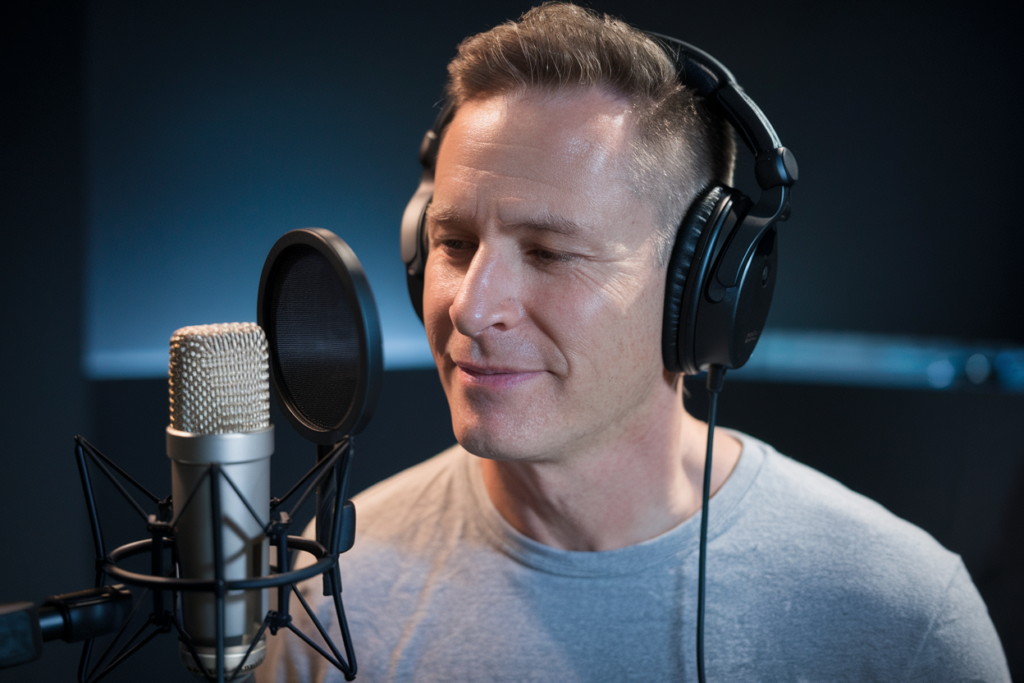Key Takeaways
- Understanding Localization: Polish voiceover localization is more than translation; it involves capturing cultural nuances and emotions to resonate with the local audience effectively.
- Language and Dialect Challenges: Language barriers, including regional dialects and accents, are critical in ensuring your content feels authentic and relatable to Polish listeners.
- Cultural Sensitivity: Selecting voice talent that reflects Poland’s diverse culture is essential for authenticity. Understanding audience preferences can enhance engagement and relatability.
- Technical Quality Matters: High-quality recording equipment and software are vital for producing polished voiceovers, while synchronization between audio and visual elements is crucial for maintaining viewer interest.
- Legal Compliance: Navigating copyright laws and local regulations is necessary for avoiding legal issues, protecting intellectual property, and ensuring culturally appropriate content delivery.
Have you ever wondered why some Polish voiceover localizations just don’t hit the mark? As global content continues to expand, the need for high-quality localization becomes crucial. Yet many face significant obstacles that can derail even the best projects.
Overview of Polish Voiceover Localization
Polish voiceover localization plays a crucial role in adapting content for the Polish-speaking audience. Understanding its significance helps navigate the complexities involved in this process.
Definition and Importance
Voiceover localization refers to the adaptation of audio content to resonate with local cultures and languages. In the case of Polish, it’s not just about translating text; it’s about capturing nuances, emotions, and cultural references that matter to your audience. This level of detail ensures that your message maintains its original impact while feeling authentic to Polish listeners. Engaging a skilled voice artist familiar with these aspects enhances relatability and effectiveness, making your content more appealing.
Current Trends in the Industry
The demand for high-quality Polish voiceovers is on the rise, influenced by various factors. With streaming platforms expanding their reach, more creators are looking to localize their productions effectively. You might notice an increase in collaboration between international companies and local voice talent who understand regional dialects and preferences. Additionally, advancements in technology have improved recording quality and accessibility for clients seeking top-notch results at competitive rates.
As audiences become more discerning, ensuring that your project includes polished voice performances has never been more critical. Staying updated on industry trends enables you to make informed choices when selecting artists or strategizing your localization efforts.
Language Barriers
Language barriers present a significant challenge in Polish voiceover localization. Effective communication demands more than mere translation; it requires understanding regional dialects and cultural nuances.
Dialect and Accent Considerations
Poland showcases a range of dialects and accents, each carrying its own significance. From the distinct Silesian accent to the subtle variations found in different regions, using the right voice talent is crucial. Selecting a voice artist familiar with these nuances ensures that local audiences resonate with your content. It builds authenticity and connection, making your message more impactful.
Nuances in Translation
Translation goes beyond word-for-word conversion; it’s about conveying emotions and intent. Certain phrases or expressions may not have direct equivalents in Polish, leading to potential misunderstandings if handled poorly. Engaging experienced voice actors who grasp these subtleties can enhance the quality of your project immensely. They know how to articulate messages that align with cultural context, ensuring clarity for your audience while preserving the original tone and spirit of the content.
Cultural Challenges
Cultural challenges in Polish voiceover localization can significantly impact project outcomes. Understanding the cultural context is crucial for creating authentic and relatable content that resonates with your audience.
Representation and Sensitivity
Representation matters in voiceover projects. Selecting voice talent who accurately reflects Poland’s diverse cultural landscape ensures authenticity. It’s essential to choose voice artists familiar with local customs, traditions, and social norms. This familiarity helps avoid misinterpretations that could alienate audiences or inadvertently offend them. Using culturally appropriate references enhances relatability, making your content more engaging.
Audience Preferences and Expectations
Audience preferences shape expectations around tone, style, and delivery in Polish voiceovers. Familiarity with local trends influences how your message is received. For example, younger audiences might favor a casual tone while older demographics may expect a more formal approach. Researching target demographics ensures you select the right voice actor whose style aligns with audience expectations, ultimately leading to greater acceptance of your localized content.
Technical Limitations
Technical limitations can pose significant challenges in Polish voiceover localization, affecting the overall quality of projects. Understanding these issues is crucial for achieving a polished final product.
Equipment and Software Issues
High-quality recording equipment plays a vital role in voiceovers. Outdated microphones or subpar audio interfaces can lead to poor sound quality, making it difficult to capture the nuances that engage listeners. Additionally, software compatibility issues may arise when integrating various tools during post-production. You want to ensure that your chosen platforms work seamlessly together. Investing in reliable equipment and up-to-date software helps maintain professional standards and prevents technical hiccups down the line.
Synchronization Difficulties
Synchronization between audio tracks and visual elements often presents hurdles in localization projects. Misaligned dialogue can disrupt viewer engagement, leading to confusion or loss of interest. Timing adjustments may become necessary when translating scripts from one language to another due to differences in word length or pacing. You should prioritize working with experienced voice actors who understand these dynamics, as they can deliver performances that sync perfectly with the original content’s intent and rhythm. Proper synchronization enhances audience immersion, creating a more impactful viewing experience while respecting cultural context.
By addressing these technical limitations effectively, you set your project up for success in capturing the essence of Polish voiceover localization.
Legal and Regulatory Hurdles
Legal and regulatory hurdles can significantly complicate Polish voiceover localization projects. Understanding these challenges ensures smoother processes and better outcomes.
Copyright and Licensing Issues
Copyright laws play a vital role in voiceover localization. You must secure proper licenses for any scripts, music, or sound effects used in your project. Failing to obtain the necessary permissions can lead to legal disputes or financial penalties. When engaging with voice talents, ensure that contracts clearly outline usage rights for recordings across different media platforms. This clarity protects both you and the artists involved while ensuring compliance with intellectual property laws.
Compliance with Local Laws
Poland has specific regulations governing media content that affect voiceover work. These regulations might include rules regarding advertising standards, age restrictions on content, or even cultural sensitivities. Familiarity with local laws is crucial; non-compliance could result in fines or bans on distribution within Poland. For instance, certain phrases may require careful translation to maintain appropriateness according to local norms.
Navigating these legal aspects of Polish voiceover localization isn’t just about following rules; it’s about fostering trust with your audience by delivering content that respects their cultural values and legal frameworks. By addressing copyright issues and complying with local laws upfront, you’ll pave the way for successful projects that resonate well within the Polish market.
Conclusion
Navigating the complexities of Polish voiceover localization requires a strategic approach. By addressing language barriers cultural nuances and technical limitations you can enhance project quality and audience engagement. Understanding regional dialects selecting the right voice talent and utilizing top-notch recording equipment are essential steps in this process.
Moreover keeping up with legal requirements ensures your content resonates authentically within Poland’s diverse market. Staying informed about industry trends not only optimizes your localization strategies but also strengthens connections with local audiences. Embracing these challenges will ultimately lead to successful projects that capture the heart of Polish culture while meeting global standards.
Frequently Asked Questions
What are the main challenges in Polish voiceover localization?
Polish voiceover localization faces several challenges, including language barriers, cultural nuances, and technical limitations. It requires not only accurate translation but also an understanding of regional dialects to capture the essence of the content. Additionally, working with high-quality recording equipment and addressing legal issues is crucial for successful projects.
Why is cultural context important in Polish voiceovers?
Cultural context is essential because it helps create authentic and relatable content. Understanding local customs and references ensures that the message resonates with the target audience, preventing misinterpretations. Selecting diverse voice talent also enhances representation, making content more appealing to Polish viewers.
How do dialects affect Polish voiceover projects?
Dialects significantly influence how well a project connects with its audience. Familiarity with Poland’s various accents allows voice actors to convey authenticity and build rapport with listeners. This connection enhances engagement and makes localized content feel more genuine.
What role does technology play in voiceover quality?
Advancements in technology have improved recording quality and accessibility for Polish voiceovers. High-quality microphones and audio interfaces can enhance sound clarity while ensuring proper synchronization between audio tracks and visuals is vital for maintaining viewer interest.
What legal considerations should be taken into account for localization?
Creators must navigate copyright laws, licensing issues, and compliance with local regulations when producing Polish voiceover content. Securing rights for scripts or music is essential to avoid legal disputes while adhering to advertising standards ensures respect for cultural sensitivities within Poland’s media landscape.
How can creators choose the right voice talent?
Selecting suitable voice talent involves understanding audience preferences regarding tone, style, and delivery. Collaborating with experienced actors who are aware of local trends ensures that their performances align well with target demographics, enhancing acceptance of localized content among Polish viewers.
Why has demand increased for quality Polish voiceovers recently?
The rise of streaming platforms has led to greater global collaboration requiring high-quality localization efforts like Polish voiceovers. As international companies seek to connect authentically with local audiences, there’s a growing need for skilled professionals who understand both language subtleties and cultural contexts.







